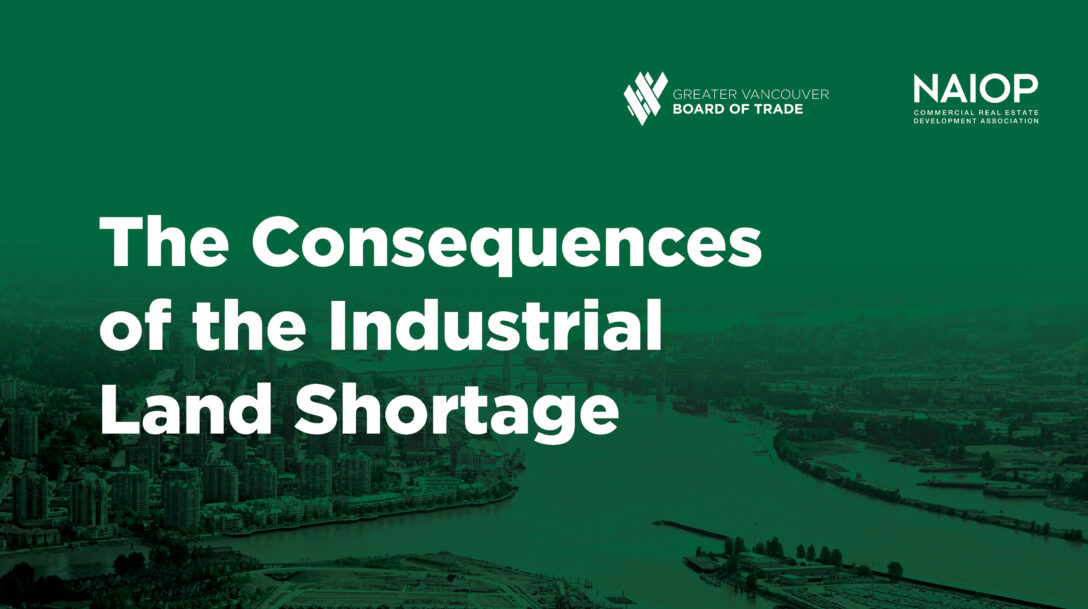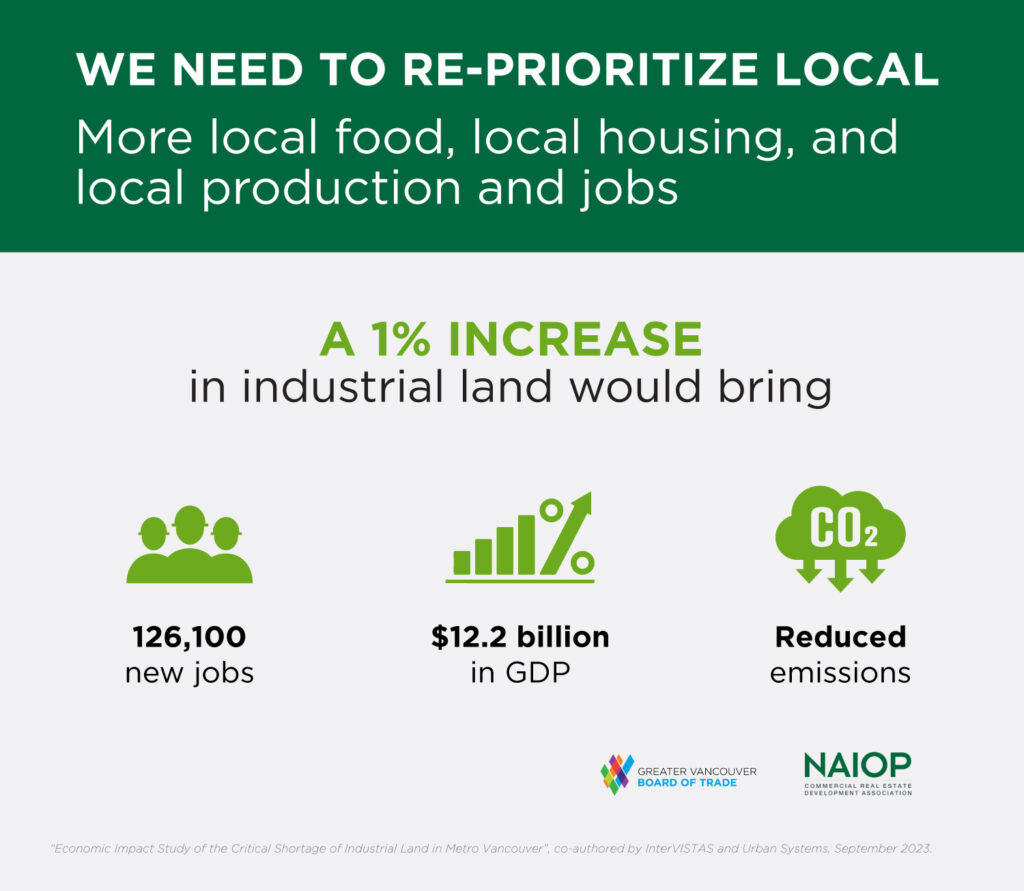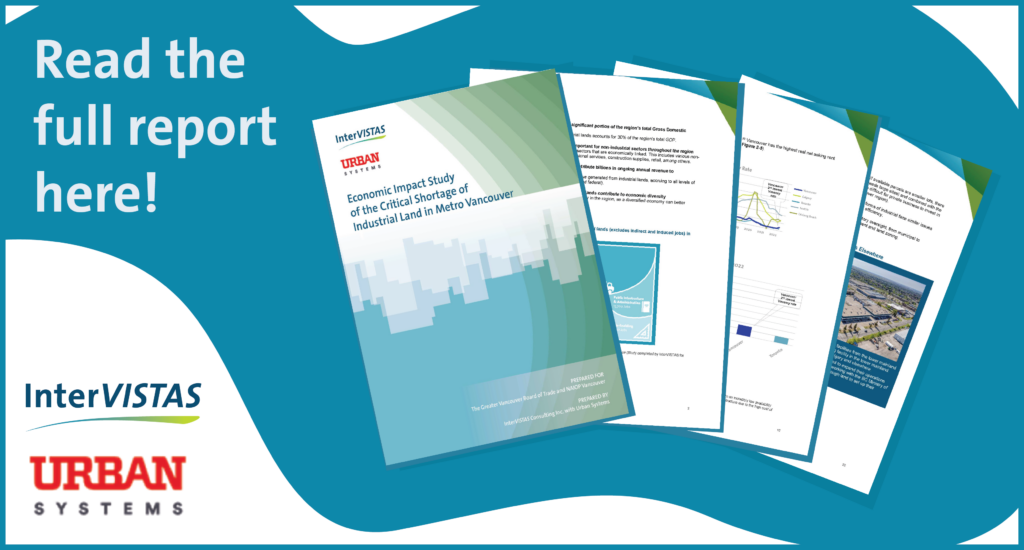
VANCOUVER, B.C. — The Greater Vancouver Board of Trade and the NAIOP Vancouver Chapter commissioned a report by InterVISTAS Consulting Inc. and Urban Systems, assessing the economic impact of the industrial land shortage in Metro Vancouver.

The findings show that industrial lands make up just four per cent of the total land mass in the region but result in over 450,000 direct and indirect jobs, $50.1 billion in GDP, and an overall output of $92.5 billion. Industrial land generates a third of regional GDP and more than one-in-four jobs (27%) are located on industrial lands. These jobs also tend to be higher wages jobs, with workers earning an average wage over 10% higher than the national average.
For years, many businesses and market commentators were forecasting that we would have a crisis of industrial land similar to our housing crisis. The data demonstrates that we have passed the tipping point and are now at a critical juncture. Vacancy rates are hovering around 1.0%, among the lowest in North America. The lack of available land has contributed to skyrocketing prices, with average land costs tripling over the last five years. Average costs per acre are now roughly six times higher in our region than in Metro Seattle or Calgary.
The result of this shortage is impeding growth and innovation. Firms are leaving Greater Vancouver along with new jobs and investments to neighbouring jurisdictions like Calgary, Edmonton, and Washington state. Over the past 4.5 years, an estimated 5.1 million sq ft of space has been taken up by firms in Calgary rather than Metro Vancouver. This includes firms that have left the region and others that preferred to invest in Vancouver but instead chose Calgary. The economic impact is estimated to be the loss of 6,300 direct jobs, $477 million in wages, and nearly $500 million in GDP. Investments in Calgary are also leading to additional environmental impacts as goods are often shipped through the Port of Vancouver, moved to Calgary, only to be trucked back to Vancouver.

The GVBOT and NAIOP Vancouver collectively are recommending that municipalities, Metro Vancouver, and the provincial government take action to address a number of identified barriers to providing the industrial land we need. The recommendations are:
- Re-focus regional land use planning to prioritize local: local housing, local food, and local production and jobs
- Increase protection and availability of industrial land in Metro Vancouver from the current 4%, including looking at non-productive lands that could be converted
- Revise regional land use plans every 3 years and require enough supply of industrial and employment lands
For every one per cent increase in land available for jobs and production, the study estimates that an additional 126,100 jobs are created and $12.2 billion in GDP is generated for B.C. These jobs would provide above average salaries and would substantially increase local production, manufacturing, and support local industries.

We are calling on governments to work with the private sector to address barriers to developing industrial lands by addressing seven barriers to development:
- Mis-matched land use (e.g., industrial lands being used for non-industrial purposes)
- Red tape, high fees, and regulatory impediments
- Long-term protection of industrial lands does not cover all current lands in the inventory
- Lands lacking access to key transportation corridors and infrastructure
- Land parcels are too small for trade-enabling purposes
- Better balance competing land use priorities
- Inability to find larger footprint if businesses want to increase scale

Related Insights
Contact Us
Ready to get started? Let’s work together on finding solutions that work for you. Get in touch and let us know how we can help!
Contact Us
